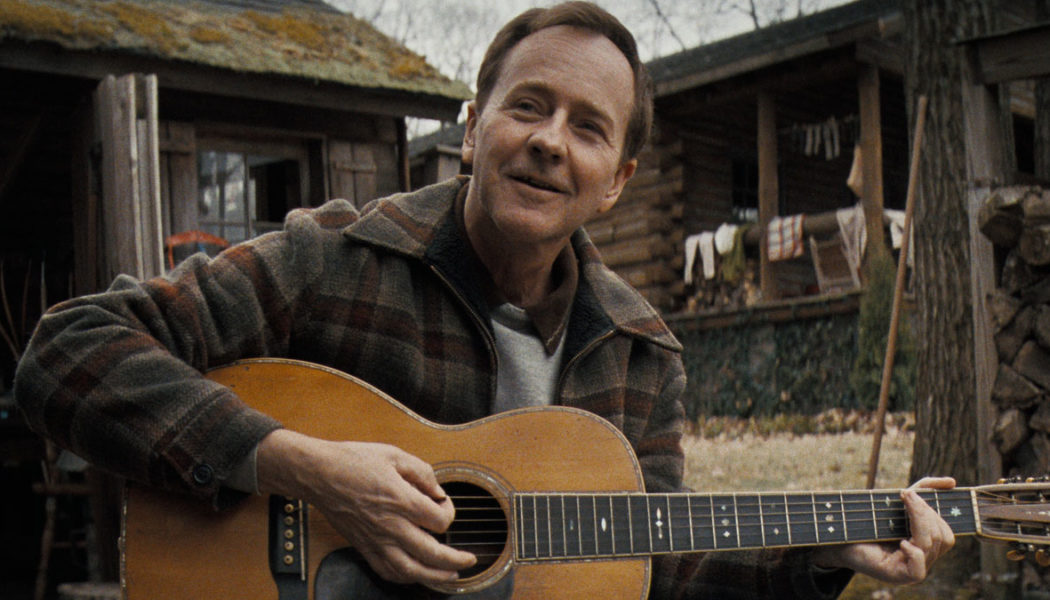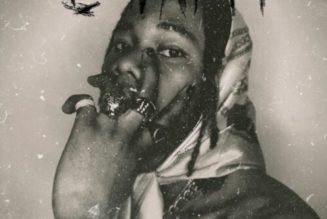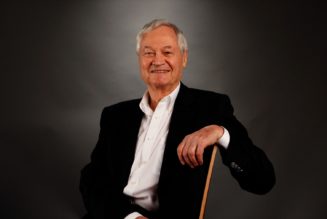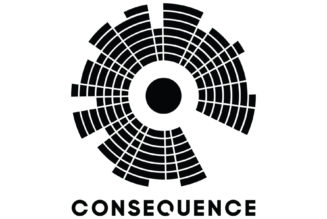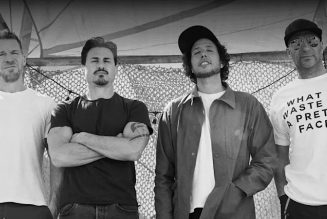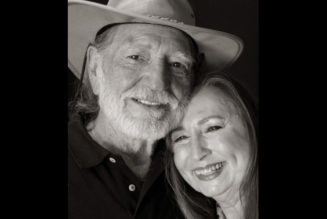
Edward Norton, over the course of his career, has played a wide range of characters, from sociopaths to priests. One thing he hasn’t done much, though, is play characters based on real people — making the role of folk singer/activist Pete Seeger in James Mangold’s A Complete Unknown a very specific challenge.
“There’s no question that there’s a psychology” to playing a real person, he tells Consequence. “You have to deal with a sense of responsibility, most especially when it’s someone who is super admired, like Pete Seeger. When people are artistically iconic, it’s sort of like, ‘Oh man, what are we doing? Why are we doing this?’ So you have to give yourself the permission to get at the essence of something.”
Norton had less time than his other castmates to prepare for playing Pete Seeger, getting only two months of prep time to learn banjo basics after filling in for the originally cast Benedict Cumberbatch. When it comes to getting ready for a role like this, though, Norton says that “I never really know what the right amount of time is. You’d always like more time to rehearse music or practice music, but I felt I knew a lot of this music and I thought I could get there.”
Related Video
What he discovered was “deceptive” about Seeger’s talents as a musician, though, is that “it’s not the chords.” In preparing to play the role, Norton reached out to Peter Yarrow from the band Peter, Paul, and Mary, asking him about a scene in the film where Seeger plays “The Lion Sleeps Tonight (Wimoweh)” for a live audience, while encouraging them to sing along.
In the scene, Norton says, “He’s playing in a pretty simple open tuning, and it’s not that musically complicated, but you begin to realize that what he’s doing is he’s actually conducting with his left hand off the open chord, and then coming back on and playing and singing and then harmonizing.” According to Norton, Yarrow confirmed that “Yeah, no one really understands, because he made it look so easy. But Pete sang the song three times at the same time. He sang it, taught it, and harmonized with it — all while playing.”
Norton adds that “you start realizing that’s what’s hard — is making that look easy. That’s when you look up at the sky and just go, ‘Man, you were a virtuoso.’ Because I need 15 hours to get this right. He did it like he was breathing.”
As rigorous as the preparations were for depicting the musical icons it portrays — Timothée Chalamet spent years exploring the essence of Bob Dylan — A Complete Unknown doesn’t promise to deliver the authentic truth about the slice of the 1960s it depicts. Norton credits Mangold for being a “great psychiatrist for all of us — he liberated us from documentary history. He almost characterized it like a fable, ‘A complete unknown, a person arriving and all that.’ All that happens when someone’s talent is propelling them through other people. Jim kind of let us be the people, but interpret them too.”
This is baked into the title itself, which Norton likes because “it signals that this is not going to be a biopic. I think within that is what I feel the film’s really about, which is an emergent moment. [James] Mangold was so articulate in saying that documentaries have been made. We do not need another historical record of this.”
This was especially true of the film’s climax, set at the infamous 1965 Newport Folk Festival. “[Mangold] always said that for him, the reason that Newport ’65 was interesting was not the ‘Rolling Stone’ musical moment in history, but more, ‘Why would such a thing cause so much emotion?’” From there, Norton says, the movie was able to explore “what happened in that short period that was so fertile creatively, where pop music and even what was rebellious counterculture music was really woven in with the politics of the time and the social change of the time.”
Continues Norton, the director “always just talked about collisions. Dylan, in [Mangold’s] mind, was like a pinball in a machine, hitting Pete Seeger and hitting Joan Baez and Johnny Cash — and all these things lit up from these collisions. I love that idea of Dylan as a force within an emergent moment that bloomed and ended very quickly.”
It’s an approach that allows us to understand Dylan better through his interactions with other people. As Norton says, “I don’t think Jim, in his script or in the film he made, was particularly interested in trying to pick the lock of Dylan — who is in many ways a musical mystic. I mean, when a person from the age of 21 as an artist says, ‘I am not inclined to let you behind the curtain,’ and keeps that up for 60 years…” He laughs. “You’ve got to respect that.”
Also, Norton says, “I have to be honest, it’s what liberates it from the pressure of going, ‘Well, why should a bunch of actors literally try to recreate this?’ Like, what’s the point? If you’re not going to look at something that’s a little more universal, which is the dynamics between people, then there’s no point. You can go to Marty Scorsese’s incredible No Direction Home documentary, you know what I mean? You’ve got to find something that hasn’t been unpacked and try to unpack it.”
Ultimately, Norton feels that A Complete Unknown knows that “what’s most interesting about [Bob Dylan] is not who was he really, but more how did this happen? Because it didn’t come out of nowhere. It was the product of touchpoints with Woody Guthrie and touchpoints with Pete Seeger. These people had this wild shared value in a very small subculture, and these things bloomed up out of them. That is in some ways, to me, more interesting than some secret psychological insight.”
A Complete Unknown arrives in theaters on December 25th.
